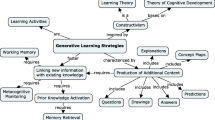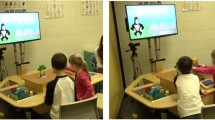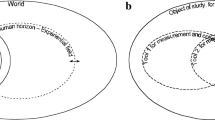Abstract
Visualization plays a relevant role for discovering patterns in big sets of data. In fact, the most common way to help a human with a pattern interpretation is through a graphic. In 2D/3D virtual environments for procedural training the student interaction is more varied and complex than in traditional e-learning environments. Therefore, the visualization and interpretation of students’ behaviors becomes a challenge. This motivated us to design the visualization of a collective student model built from student logs taken from 2D/3D virtual environments for procedural training. This paper presents the design decisions that enable a suitable visualization of this model to instructors as well as a web tool that implements this visualization and is intended: to help instructors to improve their own teaching; and to enhance the tutoring strategy of an Intelligent Tutoring System. Then, this paper illustrates, with three detailed examples, how this tool can be used to those educational purposes. Next, the paper presents an experiment for validating the utility of the tool. In this experiment we show how the tool can help to modify the tutoring strategy of a 3D virtual laboratory. In this way, it is shown that the proposed visualization of the model can serve to improve the performance of students in 2D/3D virtual environments for procedural training.


















Similar content being viewed by others
References
Aguilar D, García-Peñalvo F, Therón R (2014) Visual analytical model for educational data. In: Proceedings of the Iberian conference on information systems and technologies (CISTI). IEEE, pp 1–6
Baker RS (2010) Data mining for education. Int Enc Educ 7:112–118
Bertin J (1981) Graphics and graphic information processing
Brusilovsky P, Somyürek S, Guerra J, Hosseini R, Zadorozhny V (2015) The value of social: comparing open student modeling and open social student modeling. In: Lecture notes in computer science (including subseries lecture notes in artificial intelligence and lecture notes in bioinformatics), vol 9146. Springer Verlag, pp 44–55
Bull S, Johnson MD, Masci D, Biel C (2016) Integrating and visualising diagnostic information for the benefit of learning. In: Measuring and visualizing learning in the information-rich classroom, pp 167–80, Taylor and Francis
Card SK, Mackinlay JD, Shneiderman B (1999) Readings in information visualization: using vision to think. Morgan Kaufmann, San Francisco
Card SK, Mackinlay J (1997) The structure of the information visualization design space. In: J G, Dill N (eds) Proceedings of the IEEE symposium on information visualization, 1997, pp 92–99
de Jesús Sen Á (2016) Mejoras y extensiones en el Front-End de un modelo de predicción de acciones de un estudiante en un laboratorio virtual 3D. Bachelor Thesis, ETS de Ingenieros Informáticos, UPM, Spain jan
Einsfeld K, Agne S, Deller M, Ebert A, Klein B, Reuschling C (2006) Dynamic visualization and navigation of semantic virtual environments. In: Proceedings of the international conference on information visualisation. IEEE, pp 569–574
Grawemeyer B, Johnson H, Brosnan M (2015) Can young people with autism spectrum disorder benefit from an open learner model?. In: Lecture notes in computer science (including subseries lecture notes in artificial intelligence and lecture notes in bioinformatics). Springer, Berlin, pp 591–594
Hartley D, Mitrovic A (2363) Supporting learning by opening the student model. In: Intelligent tutoring systems, vol 2002. Springer, Berlin, pp 453–462
Healey CG, Booth KS, Enns JT (1996) High-speed visual estimation using preattentive processing. ACM Trans Comput-Human Interaction 3(2):107–135
Huang K (2015) Visualization of a student predictive model for 3D virtual environments driven to procedural training. Master Thesis, ETS de Ingenieros Informáticos, UPM, Spain
Jordão V, Gonçalves D, Gama S (2014) EduVis: visualizing educational information. In: Proceedings of the 8th nordic conference on human-computer interaction: fun, fast, foundational. ACM, pp 1011–1014
Klerkx J, Verbert K, Duval E (2014) Enhancing learning with visualization techniques. In: Handbook of research on educational communications and technology. Springer, New York, pp 791–807
Kuosa K, Distante D, Tervakari A, Cerulo L, Fernández A, Koro J, Kailanto M (2016) Interactive visualization tools to improve learning and teaching in online learning environments. In: International journal of distance education technologies (IJDET), vol 14, no 1, pp 1–21
Li X, Zhang X, Fu W, Liu X (2015) E-Learning with visual analytics. In: Proceedings of IEEE conference on e-Learning, e-Management and e-Services (IC3e). IEEE, pp 125–130
Li X, Men C, Zhang X, Du Z (2017) A smart visual analysis solution for MOOC data. In: Proceedings of dependable, autonomic and secure computing. In: 15th international conference on pervasive intelligence & computing, 3rd international conference on big data intelligence and computing and cyber science and technology congress. IEEE, pp 101–106
Lin C, Hu S, Lai H, Chiang C, Tseng H, Cheng Y (2017) VisCa: A dashboard system to visualize learning activities from e-learning platforms BT - emerging technologies for education. In: Proceedings of the international symposium on emerging technologies for education. Springer, pp 422–427
MacEachren AM (1995) How maps work: representation, visualization, and design, vol 3
Mackinlay J (1986) Automating the design of graphical presentations of relational information. ACM Trans Graph 5(2):110–141
Martinez-Maldonado R, Pardo A, Mirriahi N, Yacef K, Kay J, Clayphan A (2015) The LATUX workflow. In: Proceedings of the 5th international conference on learning analytics and knowledge - LAK ’15. ACM Press, pp 1–10
Mazza R (2004) Using information visualisation to facilitate instructors in web-based distance learning. Ph.D. Dissertation, Universitá della Svizzera Italiana
Mazza R (2009) Introduction to information visualization. Springer Science & Business Media
Mazza R (2010) Visualization in educational environments. In: Romero C, Ventura S, Pechenizkiy M, Baker RSJD (eds) Handbook of educational data mining, pp 9–26
Mazza R, Botturi L (2007) Monitoring an online course with the GISMO tool: a case study. J Interact Learn Res 18(2):251–265
Mazza R, Dimitrova V (2007) CourseVis: a graphical student monitoring tool for supporting instructors in web-based distance courses. Int J Hum Comput Stud 65 (2):125–139
Mitrovic A (2002) NORMIT: A Web-enabled tutor for database normalization. In: Proceedings - international conference on computers in education, ICCE 2002, vol 1. IEEE Comput. Soc, pp 1276–1280
Moral C (2016) Modeling the visualization and exploration of document collections with user and purpose-based adaptation. Ph.D Dissertation, Universidad Politécnica de Madrid
Paiva R, Bittencourt I, Lemos W, Vinicius A, Dermeval D (2018) Visualizing learning analytics and educational data mining outputs. In: Proceedings of the international conference on artificial intelligence in education. Springer
Pesare E, Roselli T, Rossano V (2016) Visualizing student engagement in e-learning environment. In: Proceedings - DMS 2016: 22nd international conference on distributed multimedia systems. Springer, pp 26–33
Rami̇rez J, Rico M, Riofri̇o-Luzcando D, Berrocal-Lobo M, de Antonio A (2017) Students’ evaluation of a virtual world for procedural training in a tertiary-education course. Journal of Educational Computing Research, p 0735633117706047
Rasyidi J, Bull S (2009) Consultation of misconceptions representations by students in education-related courses. In: Frontiers in artificial intelligence and applications, vol 200. IOS Press, p 56572
Reffay C, Chanier T (2003) How social network analysis can help to measure cohesion in collaborative distance-learning. Springer Netherlands, Dordrecht, pp 343–352
Rico M, Rami̇rez J, Riofri̇o D, Berrocal-Lobo M, De Antonio A (2012) An architecture for virtual labs in engineering education. In: Global engineering education conference (EDUCON), 2012. IEEE, pp 1–5
Rico M, Rami̇rez J, Riofri̇o-Luzcando D, Berrocal-Lobo M (2017) A cost-effective approach for procedural training in virtual worlds. J Univ Comput Sci 23(2):208–232
Riofrio-Luzcando D, Ramirez J, Berrocal-Lobo M (2017) Predicting student actions in a procedural training environment. IEEE Trans Learn Technol 10(4):463–474
Shneiderman B (1996) The eyes have it: a task by data type taxonomy for information visualizations. In: Proceedings of the IEEE symposium on visual languages. IEEE, pp 336–343
Tan P-N, Steinbach M, Kumar V (2013) Introduction to data mining, 1st edn. Pearson Education Limited, London
Tervakari A, Silius K, Koro J, Paukkeri J, Pirttilä O (2015) Usefulness of information visualizations based on educational data. In: IEEE global engineering education conference, EDUCON, pp 142—51
Uther J, Kay J (2003) VlUM, a Web-Based visualisation of large user models. In: Proceedings of UM 2003, User Modelling, pp 198–202
Vatrapu R, Teplovs C, Fujita N, Bull S (2011) Towards visual analytics for teachers’ dynamic diagnostic pedagogical decision-making. In: Proceedings of the 1st international conference on learning analytics and knowledge. ACM, pp 93–98
Wan H, Yu Q, Ding J, Liu K (2017) Students’ behavior analysis under the Sakai LMS. In: Proceedings of the IEEE 6th international conference on teaching, assessment, and learning for engineering (TALE), 2017. IEEE, pp 250–255
Wortman D, Rheingans P (2007) Visualizing trends in student performance across computer science courses. In: Proceedings of the 38th SIGCSE technical symposium on computer science education. ACM, pp 430–434
Xiaohuan W, Guodong Y, Huan W, Wei H (2013) Visual exploration for time series data using multivariate analysis method. In: Proceedings of the 8th international conference on computer science & education. ACM, pp 1189–1193
Xiong R, Donath J (1999) PeopleGarden: creating data portraits for users. In: Proceedings of the 12th annual ACM symposium on user interface software and technology, pp 37–44
Zapata-Rivera J-D, Greer J (2001) Externalising learner modelling representations. In: Proceedings of workshop on external representations of AIED: multiple forms and multiple roles. Citeseer, pp 71–76
Zapata-Rivera JD, Greer JE, Cooke J (2000) An XML-based tool for building and using conceptual maps in education and training environments. In: Proceedings of the 8th conference on computers in education, pp 755–762
Acknowledgments
Riofrío would like to acknowledge financial support from the Ecuadorian Secretariat of Higher Education, Science, Technology and Innovation (SENESCYT). We want to thank Kelly Huang and Álvaro de Jesús Sen, for their collaboration in this research through their master and undergraduate theses.
Author information
Authors and Affiliations
Corresponding author
Additional information
Publisher’s Note
Springer Nature remains neutral with regard to jurisdictional claims in published maps and institutional affiliations.
Rights and permissions
About this article
Cite this article
Riofrío-Luzcando, D., Ramírez, J., Moral, C. et al. Visualizing a collective student model for procedural training environments. Multimed Tools Appl 78, 10983–11010 (2019). https://doi.org/10.1007/s11042-018-6641-x
Received:
Revised:
Accepted:
Published:
Issue Date:
DOI: https://doi.org/10.1007/s11042-018-6641-x




